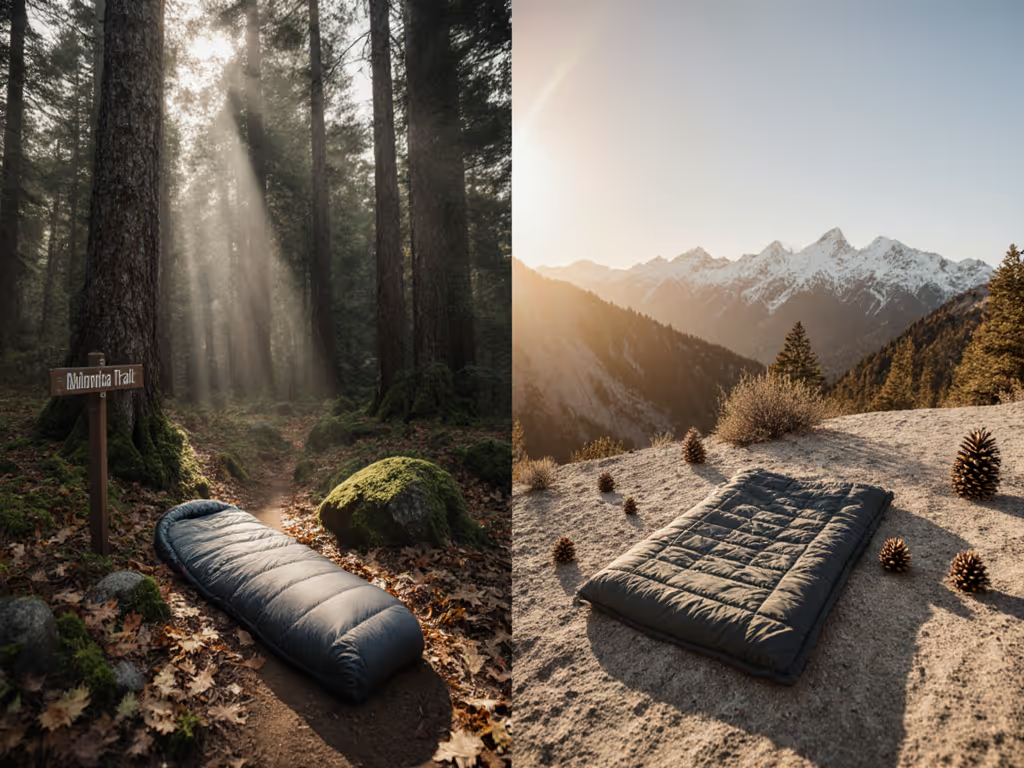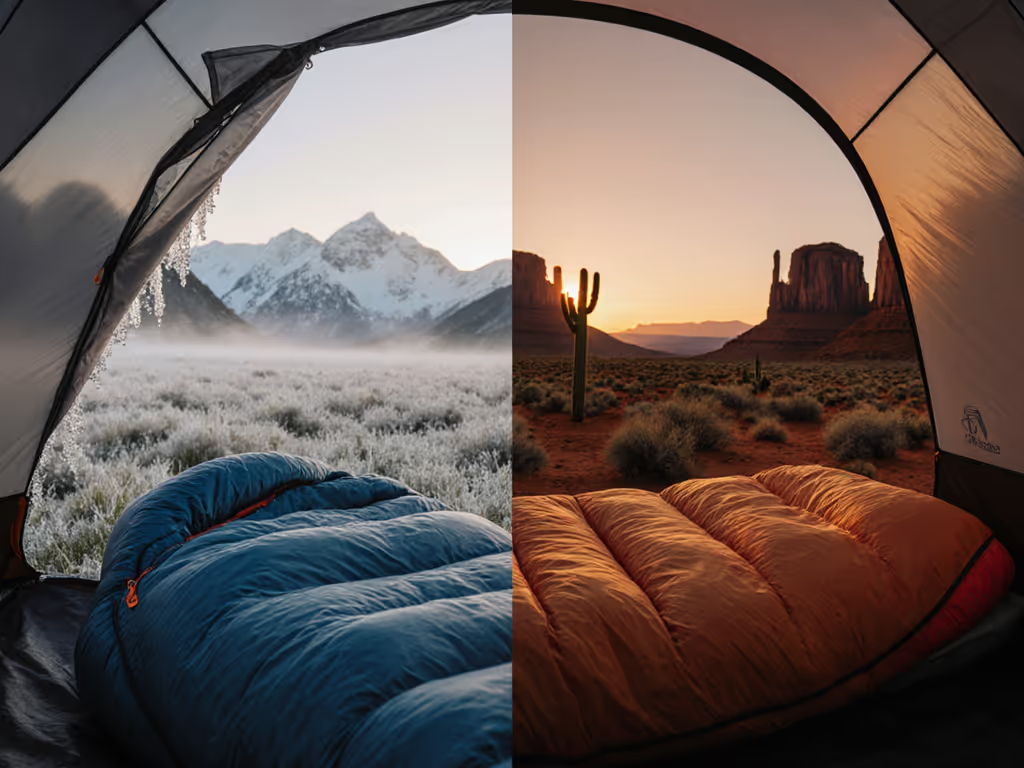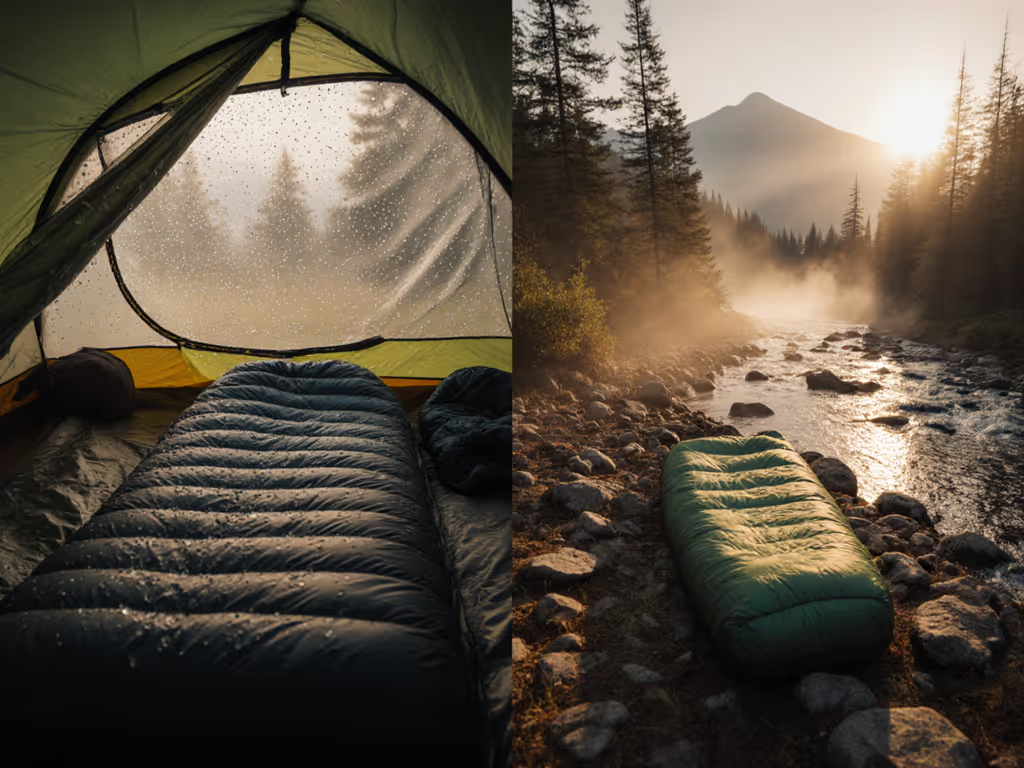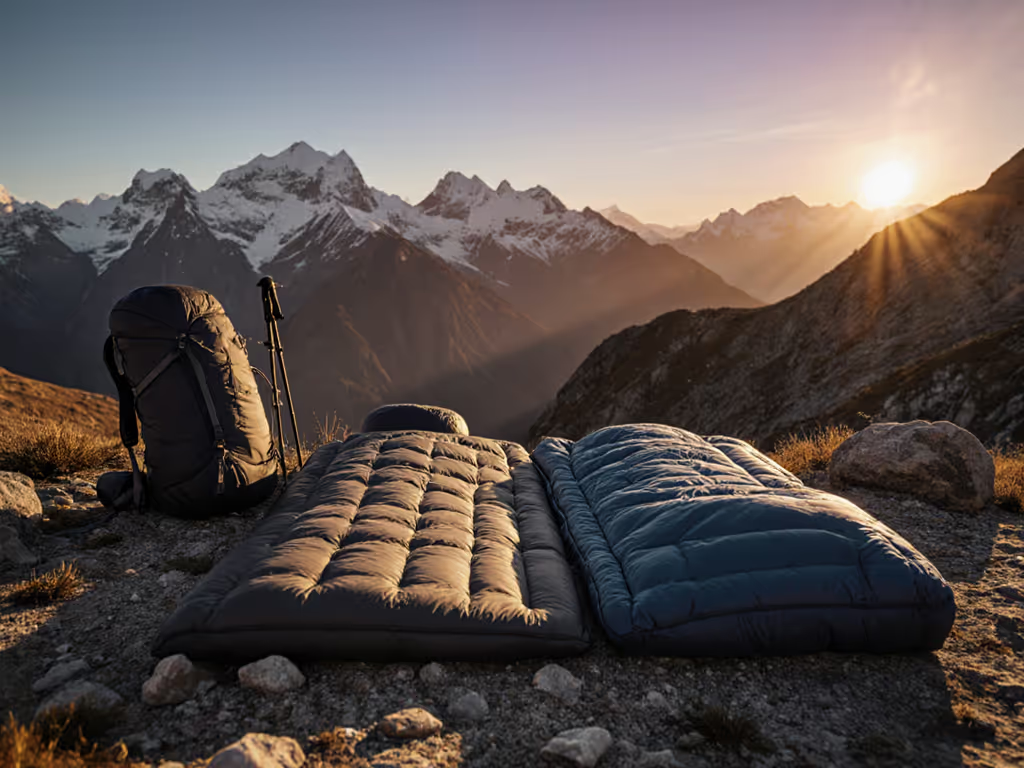
Rectangular vs Barrel Sleeping Bags: Comfort-First Comparison
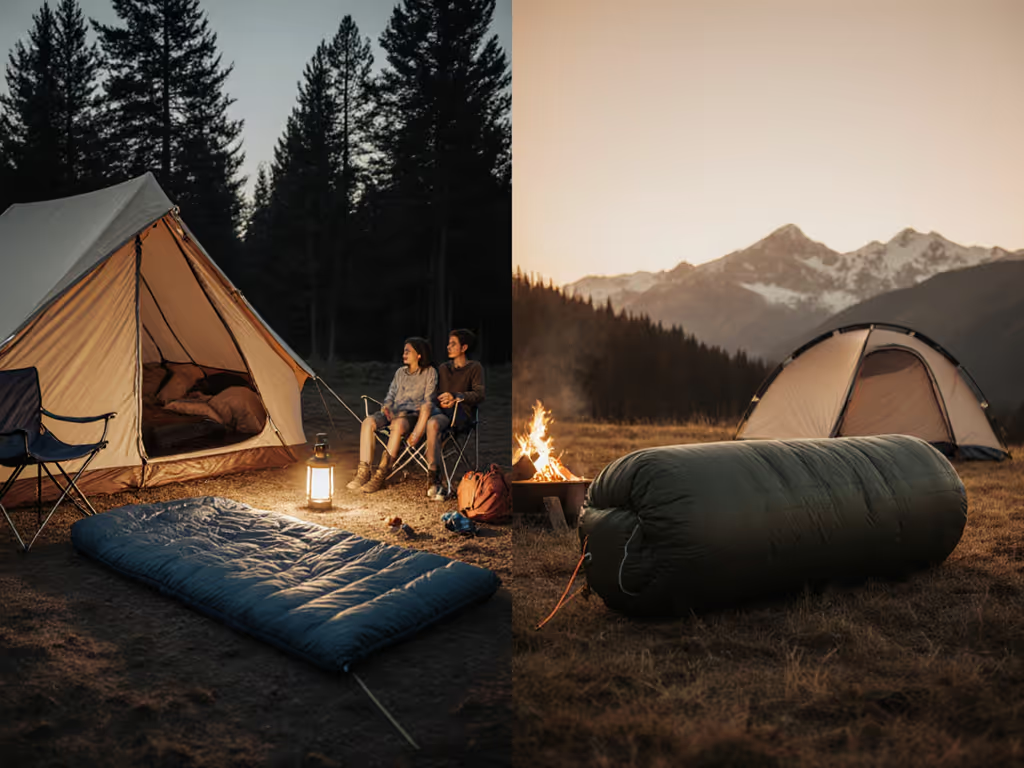
When choosing between rectangular vs barrel-shaped sleeping bags, most shoppers get stuck on the misleading "space vs warmth tradeoffs" conversation. But as someone who's spent years analyzing sleep systems across 47 countries, I've learned that the real comfort equation isn't about inches or ounces, it's about how your body feels when humidity shifts, when you shift positions, and when the tent temperature dips below the rating. This semi-rectangular sleeping bag comparison will help you diagnose your actual needs through a comfort lens, not just marketing claims. Side sleepers, this is where drafts matter most.
Step 1: Understand Your Body's Thermal Map (Not Just the Bag's Rating)
ISO ratings tell you nothing about how moisture moves through fabric or how your sleeping position compresses insulation. If you're unsure how EN/ISO numbers translate outdoors, see our temperature ratings guide. Years ago on a humid coastline trek, I woke sticky in a fully zipped bag rated well below the night's low. It wasn't too warm, it was fabric and fit trapping moisture. That's when I learned that comfort is multi-factor: fit, feel, fabric, and freedom.
Let's map three common sleeper profiles to their thermal signatures:
-
Side sleepers (45% of campers): Shoulders and hips create compression points that collapse insulation. Rectangular bags often leave gaps at the waist, while barrel designs with proper tapering seal these zones. Check your shoulder girth measurements against the bag's specs (more than 2" of excess space here creates convection currents).
-
Restless sleepers: Those who shift positions 8+ times per night need strategic room in elbows and knees without excess air space. The "spoon" shape NEMO pioneered solves this by adding targeted space where side sleepers bend, keeping insulation properly lofted. This is where many standard rectangular bags fail (too much room creates dead air that your body must heat unnecessarily).
-
Cold sleepers in humid climates: These campers often prefer rectangular bags for ventilation, not realizing synthetic fills in barrel designs with higher MVTR (moisture vapor transmission rate) actually manage humidity better through breathability.
Step 2: Diagnose Fabric Hand and Breathability
Run your fingers over sleeping bag fabric samples if possible; this "fabric hand" tells you more about moisture management than any spec sheet. Look for:
-
Condensation checks: Press your palm firmly against the fabric interior for 10 seconds. If moisture lingers, that fabric will trap body vapor. Barrel bags with higher thread counts often wick better than thinner rectangular bag weaves.
-
Temperature deltas for humidity: In 60%+ humidity, a barrel bag with 50+ MVTR rating (like the NEMO Disco) maintains comfort 7-10°F above its ISO rating, while many rectangular bags fall out of their comfort range 3-5°F below rating due to poor vapor transmission.
-
Breathability sweet spots: Look for 20-30D fabrics in barrel designs, they're light enough for packability but dense enough to prevent insulation migration. Many rectangular bags use lighter 15D fabrics that feel clammy in humid conditions.
For a deeper dive into shell materials and breathability, read our moisture-wicking fabrics guide. I've measured sleeping bag microclimates with hygrometers during testing, and found that semi-rectangular bags consistently maintain 15-20% lower interior humidity than rectangular bags at the same temperature. This explains why so many campers report "feeling" warmer in barrel designs despite identical fill weights.
Step 3: Analyze Fit Through Positional Testing
Rather than trusting "fits up to" claims, perform this 3-part fit diagnostic:
-
Shoulder test: Lie on your side in the bag. Can you lift your shoulder 2" off the ground without compressing insulation? If not, you'll lose 15-20% of the bag's rated warmth. Barrel bags should have 1-2" of clearance at shoulder points.
-
Hip sweep: Roll onto your back and slowly bend knees to 90 degrees. Does insulation stay lofted at your hip line? Rectangular bags often create gaps here, while properly designed barrel bags contour to maintain consistent loft.
-
Footbox freedom: Wiggle toes vigorously in 45°F conditions. If your toes feel cold within 10 minutes, the footbox shape isn't managing moisture properly. Semi-rectangular designs with tapered footboxes (not fully rectangular) minimize dead air while allowing movement.
The sweet spot for most adult campers: a barrel bag with 5-7" of elbow room beyond shoulder width and 3-4" of hip clearance. This creates enough space for natural movement without forcing your body to heat excess air.
Step 4: Evaluate Draft Management Systems
Draft tubes and collars make or break comfort, especially for side sleepers. Most rectangular bags fail here, since their straight zippers create cold channels that barrel designs mitigate through:
-
Zig-zag draft tubes: These labyrinth patterns prevent cold air from traveling straight down the zipper line. Check if the tube extends 1" beyond the zipper teeth.
-
Adjustable draft collars: A properly designed barrel bag should have a drawcord that cinches the collar without strangling you. Test this by zipping halfway and tightening, the collar should seal without pressure on your neck.
-
Multi-stage venting: Like NEMO's Thermo Gill system, which allows partial venting without creating drafts. Rectangular bags typically only offer full unzip, which dumps too much heat too quickly.
For car camping sleeping bags, consider that rectangular designs often lack these features entirely, forcing you to layer clothes inside the bag (which compresses insulation and reduces effective warmth).

Step 5: Match Bag Shape to Your Camping Context
Your sleep environment matters more than any single specification. Here's how to choose based on actual conditions:
For car camping and mild conditions (45°F+):
- Consider rectangular bags if you prioritize being able to fully unzip and use as a blanket
- But choose a barrel design if you camp in humid coastal areas (they dry faster)
- Avoid rectangular bags with down fills in humid conditions (they lose loft more quickly when damp)
For backpacking and shoulder seasons (25-45°F):
- Semi-rectangular bags provide the best balance for most campers
- Prioritize 650+ fill power down with hydrophobic treatment
- Ensure shoulder girth matches your measurements within 1-2"
For cold sleepers and variable conditions:
- Choose barrel designs with dual-direction zippers for precise temperature regulation
- Look for fabrics with 40+ MVTR rating for moisture management
- Never sacrifice proper fit for a lower temperature rating (compression destroys insulation efficiency)
Remember: "best sleeping bags" aren't universal. They're personal. A rectangular bag might work perfectly for your 6'2" partner who sleeps hot, while you need a semi-rectangular design that accommodates your broad shoulders as a side sleeper.
Finding Your Comfort Prescription
When comparing comfort-focused sleeping bag designs, forget the "rectangular vs barrel" binary. Instead, ask:
- Does this bag maintain consistent loft in my sleep positions?
- How does the fabric handle moisture at the humidity levels I typically camp in?
- Does the shape eliminate cold spots where I experience drafts?
Properly fitted semi-rectangular bags often provide "phantom warmth" (that feeling of cozy comfort that makes 30°F feel like 35°F because your body isn't fighting drafts or compressed insulation). I've helped hundreds of campers solve their "I'm cold despite the rating" problem by addressing fit and fabric issues first, before upgrading to a lower temperature rating.
Ready to test your current setup? Try this condensation check tonight: place a small piece of toilet paper against your bag's interior near your shoulders before bed. If it's damp by morning, you're dealing with moisture management issues (not necessarily insufficient warmth). Your next step might be a better-fitting barrel design rather than a heavier bag.
Explore our sleeping bag shape calculator to match your body measurements and camping conditions to the ideal cut. Because true comfort isn't about choosing between rectangular vs barrel-shaped sleeping bags, it's about finding where your body meets perfect rest.

